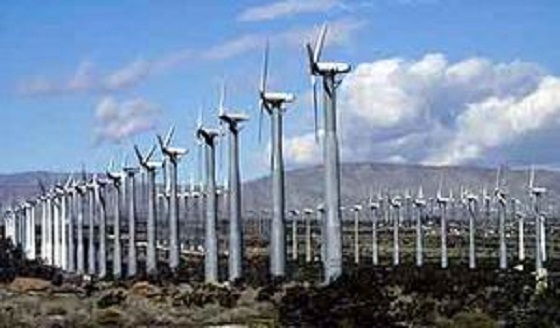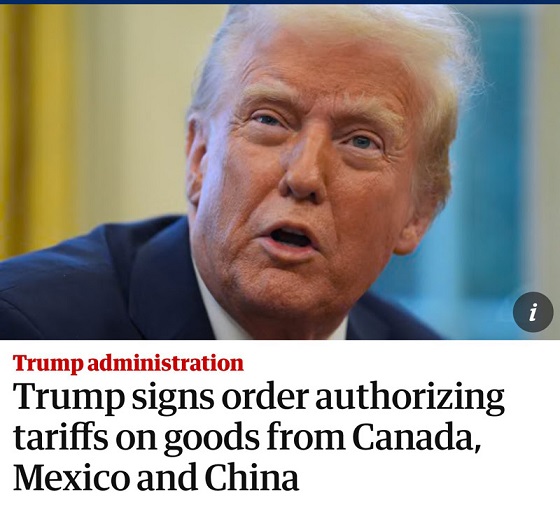Alberta
Alberta activates contingency mail delivery plan
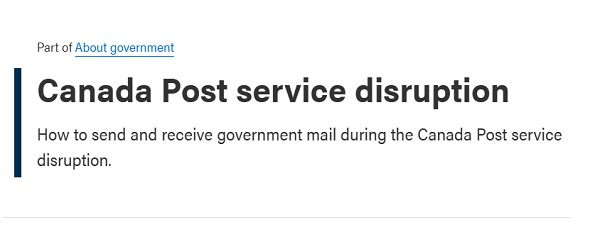
Alberta’s government has a plan to ensure critical government mail continues to be delivered during the service interruption at Canada Post.
In response to the service disruption at Canada Post, Alberta’s government is taking steps to ensure critical mail between Albertans and the government continues to flow.
Starting Tuesday, Nov. 19, mail can be accepted from Albertans at designated Alberta government offices across the province to ensure it reaches the proper destination. No stamps are required. The full list of designated buildings is available on Alberta.ca.
Albertans who receive mail from the provincial government will receive a notification by email or phone indicating where and when they can pick-up/drop-off their mail. Alberta’s government will never ask for personal information over the phone or for anyone to click on a link in an email. Non-critical mail will be held by the originating department until Canada Post mail service resumes.
Some departments are participating in a Canada Post program to deliver social-economic cheques once a month during the disruption. Many departments that issue cheques also offer direct deposit. For more information, or to inquire about signing up for direct deposit, Albertans should contact the government department that issues the payment.
Additional information will be posted online as it becomes available.
Quick facts
- Only critical mail can be delivered to the general public during a work interruption. Non-critical or promotional mail should not be sent during this time.
- Ministries must arrange for staff serving the public to accept and forward critical mail from Albertans to the appropriate government recipients.
- Critical mail is material that must reach its intended recipient to avoid health, safety, financial or other significant harm to Albertans, significant risk or loss to government, or legislative non-compliance and that cannot be delivered expediently by courier, fax, electronic or other means.
- Canada Post employees will deliver federal and provincial government socio-economic cheques one day per month during a work interruption.
- Additional information will be posted on Alberta.ca as it becomes available.
Related information
Government mail drop locations – Effective November 19
| City / Town | Drop Point | Address |
|---|---|---|
| Airdrie | Agricultural Centre | 97 East Lake Ramp NE, Airdrie, AB T4A 0C3 |
| Athabasca | Jewell Building | #2, 3603 – 53 St., Athabasca, AB T9S 1A9 |
| Barrhead | AFSC | 4924 50 Ave, Barrhead, AB T7N 1A4 |
| Blairmore | Provincial Building | 12501 – Crowsnest Pass Provincial Building, Blairmore, AB T0K 1E0 |
| Bonnyville | Provincial Building | P.O. Box 5244, 4904 – 50 Ave., Bonnyville, AB T9N 2G4 |
| Brooks | Provincial Building | 220 – 4 Ave. W, Brooks, AB T1R 1C6 |
| Calgary | West Direct Express | Bay 30, 333 28 Street NE, Calgary, AB T2A 7P4 |
| Camrose | AFSC | P.O. Box 5000, 4910 – 52 St., Camrose, AB T4V 2V4 |
| Canmore | Provincial Building | 3rd Floor, 800 – Railway Ave., Canmore, AB T1W 1P1 |
| Cardston | Provincial Building | 576 – Main St., Cardston, AB T0K 0K0 |
| Caroline | Alberta Highway Services Yard | P.O. Box 160, Caroline, AB T0M 0M0 |
| Castor | Alberta Health Services | 4911 – 50 Avenue Castor, AB T0C 0X0 |
| Claresholm | Provincial Building | P.O. Box 1650, 109 – 46 Ave. W, Claresholm, AB T0L 0T0 |
| Coaldale | RCMP Detachment | 705 – 19A Avenue, Coaldale, AB T1M 1A7 |
| Cochrane | Provincial Building | 2nd Floor, 213 – 1 St. W, Cochrane, AB T4C 1A5 |
| Cold Lake | AB Supports | #408 6501B – 51 Street, Cold Lake, AB T9M 1P2 |
| Consort | Provincial Building | 4916 – 50 St., Consort, AB T0C 1B0 |
| Drayton Valley | Provincial Building | 5136 – 51 Ave., Drayton Valley, AB T7A 1S4 |
| Drumheller | Riverside Centre | 180 – Riverside Centre, Drumheller, AB T0J 0Y4 |
| Edmonton | MSV Building | 12360 – 142 Street NW, Edmonton, AB T5L 2H1 |
| Edson | Provincial Building | 111 – 54 St., Edson, AB T7E 1T2 |
| Evansburg | Health Centre | 5525 – 50 St., Evansburg, AB T0E 0T0 |
| Fairview | AARD | #213, 10209 – 109 St., Fairview, AB T0H 1L0 |
| Falher | AFSC | 701 – Main St., Falher, AB T0H 1M0 |
| Foremost | Provincial Building | 218 – Main St., Foremost, AB T0K 0X0 |
| Fort MacLeod | Fort MacLeod Healthcare Centre | P.O. Box 520, 744 – 26 St., Fort MacLeod, AB T0L 0Z0 |
| Fort McMurray | Provincial Building | 9915 – Franklin Ave., Fort McMurray, AB T9H 2K4 |
| Fort Saskatchewan | Correctional Centre | Bag 10, 7802 – 101 St., Fort Saskatchewan, AB T8L 2P3 |
| Fort Vermilion | Ranger Station | 5001 46 Ave Fort Vermilion, AB T0H 1N0 |
| Fox Creek | Ranger Station | 201 Kaybob Drive, Fox Creek, AB T0H 1P0 |
| Grande Prairie | Provincial Building | 10320 – 99 St., Grande Prairie, AB T8V 6J4 |
| Grimshaw | AFSC | 5306 – 50 Street, Grimshaw, AB T0H 1W0 |
| Hanna | Provinical Building | 401 – Centre St., Hanna, AB T0J 1P0 |
| High Level | Provincial Building | 10106 – 100 Ave., High Level, AB T0H 1Z0 |
| High Prairie | Provincial Building | 5226 – 53 Ave., High Prairie, AB T0G 1E0 |
| High River | Spitzee Crossing Building | 124 – 4 Avenue SW, High River, AB T1V 1M3 |
| Hinton | Hinton Training Centre | 1176 – Switzer Dr., Hinton, AB T7V 1V3 |
| Innisfail | Eastgate Mall | Bay 11, 4804 – 42 Ave., Innisfail, AB T4G 1V2 |
| Killam | Killam Mental Health Clinic | 4811 – 49 Ave., Killam, AB T0B 2L0 |
| Lac La Biche | Health Centre | 9503 – Beaver Hill Rd., Lac La Biche, AB T0A 2C0 |
| Lacombe | AFSC | 5718 – 56 Ave., Lacombe, AB T4L 1B1 |
| Lamont | AFSC | 5014 – 50 Ave., Lamont, AB T0B 2R0 |
| Leduc | Provincial Courthouse | 4612 – 50 St., Leduc, AB T9E 6L1 |
| Lethbridge | Provincial Building | 200 – 5 Ave. S, Lethbridge, AB T1J 4L1 |
| Lloydminster | Provincial Building | 5124 – 50 St., Lloydminster, AB T9V 0M3 |
| Manning | Environment and Parks | #400, 2nd Street SW, Manning, AB T0H 2M0 |
| McLennan | Kirkland Building | P.O. Box 326, 205 – 1 St. E, McLennan, AB T0H 2L0 |
| Medicine Hat | Provincial Building | #1-106, 346 – 3 St. SE, Medicine Hat, AB T1A 0G7 |
| Morniville | Provincial Building | 10008 – 107 St., Morinville, AB T8R 1L3 |
| Olds | Provincial Building | 5030 – 50 St., Olds, AB T4H 1S1 |
| Peace River | Provincial Building | Bag 900, 9621 – 96 Ave., Peace River, AB T8S 1T4 |
| Pincher Creek | Provincial Building | 782 – Main St., Pincher Creek, AB T0K 1W0 |
| Ponoka | Provincial Building | P.O. Box 4426, 5110 – 49 Ave., Ponoka, AB T4J 1S1 |
| Provost | Provincial Building | 5419 – 44 Ave., Provost, AB T0B 3S0 |
| Red Deer | Provincial Building | 4920 – 51 St., Red Deer, AB T4N 6K8 |
| Rimbey | Provincial Building | 2nd Floor, 5025 – 55 St., Rimbey, AB T0C 2J0 |
| Rocky Mountain House | Provincial Building | 2nd Floor, 4919 – 51 St., Rocky Mountain House, AB T4T 1B3 |
| St. Albert | Provincial Building | 30 – Sir Winston Churchill Ave., St. Albert, AB T8N 3A3 |
| St. Paul | Provincial Building | 5025 – 49 Ave., St. Paul, AB T0A 3A4 |
| Sedgewick | Flagstaff Building | 4701 – 48 Ave., Sedgewick, AB T0B 4C0 |
| Sherwood Park | Centre Plaza | 190 Chippewa Road, Sherwood Park, AB T8A 4H5 |
| Slave Lake | Government Centre | 101- 3rd Street SW, Slave Lake, AB T0G 2A4 |
| Smoky Lake | Provincial Building | 2nd Floor, 108 – Wheatland Ave., Smoky Lake, AB T0A 3C0 |
| AB Tree Improvement | P.O. Box 750, 59162 – R.R. 155, Smoky Lake, AB T0A 3C0 | |
| Spirit River | AFSC | 4202 – 50 Street, Spirit River, AB T0H 3G0 |
| Spruce Grove | Provincial Building | #1, 250 – Diamond Ave., Spruce Grove, AB T7X 4C7 |
| Stettler | Provincial Building | 4705 – 49 Ave., Stettler, AB T0C 2L0 |
| Stony Plain | Provincial Building | 4709 – 44 Ave., Stony Plain, AB T7Z 1N4 |
| Strathmore | AFSC | 325 – 3 Ave., Strathmore, AB T1P 1B4 |
| Sundre | Ranger Station | P.O. Box 519, 127 – 1 St. NW, Sundre, AB T0M 1X0 |
| Taber | Provincial Building | 5011 – 49 Ave., Taber, AB T1G 1V9 |
| Three Hills | AFSC | 128 – 3 Avenue, Tofield, AB T0M 2A0 |
| Tofield | Provincial Building | 5024 51 Ave , Tofield, AB T0B 4J0 |
| Ukrainian Village | Ukrainian Village | c/o 8820 – 112 St., Edmonton, AB T6G 2P8 |
| Valleyview | Provincial Building | 5102 – 50 Ave., Valleyview, AB T0H 3N0 |
| Vegreville | Haverhill Building | 5121 – 49 Street E, Vegreville, AB T9C 1S7 |
| Vermilion | Provincial Building | P.O. Box 30, 4701 – 52 St., Vermilion, AB T9X 1J9 |
| Vulcan | AFSC | 104 Centre Street E, Vulcan, AB T0L 2B0 |
| Wainwright | Provincial Building | #4, 810 – 14 Ave., Wainwright, AB T9W 1R2 |
| Westlock | Provincial Building | 2nd Floor, 10003 – 100 St., Westlock, AB T7P 2E8 |
| Wetaskiwin | Provincial Building | 5201 – 50 Ave., Wetaskiwin, AB T9A 0S7 |
| Whitecourt | Provincial Building | 5020 – 52 Ave., Whitecourt, AB T7S 1N2 |
| Youngstown | Special Areas | 404 – 2 Ave , Youngstown, AB T0J 3P0 |
2025 Federal Election
The High Cost Of Continued Western Canadian Alienation

From EnergyNow.Ca
By Jim Warren
Energy Issues Carney Must Commit to if He Truly Cares About National Cohesion and be Different From Trudeau
If the stars fail to align in the majority of Western Canada’s favour and voters from Central Canada and the Maritimes re-elect a Liberal government on April 28, it will stand as a tragic rejection of the aspirations of the oil producing provinces and a threat to national cohesion.
As of today Mark Carney has not clearly and unequivocally promised to tear down the Liberal policy wall blocking growth in oil and gas exports. Yes, he recently claimed to favour energy corridors, but just two weeks earlier he backtracked on a similar commitment.
There are some promises Carney hopefully won’t honour. He has pledged to impose punitive emissions taxes on Canadian industry. But that’s supposedly alright because Carney has liberally sprinkled that promise with pixie dust. This will magically ensure any associated increases in the cost of living will disappear. Liberal wizardry will similarly vaporize any harm Carbon Tax 2.0 might do to the competitive capacity of Canadian exporters.
Carney has as also promised to impose border taxes on imports from countries that lack the Liberals’ zeal for saving the planet. These are not supposed to raise Canadians’ cost of living by much, but if they do we can take pride in doing our part to save the planet. We can feel good about ourselves while shopping for groceries we can’t afford to buy.
There is ample bad news in what Carney has promised to do. No less disturbing is what he has not agreed to do. Oil and gas sector leaders have been telling Carney what needs to be done, but that doesn’t mean he’s been listening.
The Build Canada Now action plan announced last week by western energy industry leaders lays out a concise five-point plan for growing the oil and gas sector. If Mark Carney wants to convince his more skeptical detractors that he is truly concerned about Canadian prosperity, he should consider getting a tattoo that celebrates the five points.
Yet, if he got onside with the five points and could be trusted, would it not be a step in the right direction? Sure, but it would also be great if unicorns were real.
The purpose of the Build Canada Now action plan couldn’t be much more clearly and concisely stated. “For the oil and natural gas sector to expand and energy infrastructure to be built, Canada’s federal political leaders can create an environment that will:
1. Simplify regulation. The federal government’s Impact Assessment Act and West Coast tanker ban are impeding development and need to be overhauled and simplified. Regulatory processes need to be streamlined, and decisions need to withstand judicial challenges.
2. Commit to firm deadlines for project approvals. The federal government needs to reduce regulatory timelines so that major projects are approved within 6 months of application.
3. Grow production. The federal government’s unlegislated cap on emissions must be eliminated to allow the sector to reach its full potential.
4. Attract investment. The federal carbon levy on large emitters is not globally cost competitive and should be repealed to allow provincial governments to set more suitable carbon regulations.
5. Incent Indigenous co-investment opportunities. The federal government needs to provide Indigenous loan guarantees at scale so industry may create infrastructure ownership opportunities to increase prosperity for communities and to ensure that Indigenous communities benefit from development.”
As they say the devil is often in the details. But it would be an error to complicate the message with too much detail in the context of an election campaign. We want to avoid sacrificing the good on behalf of the perfect. The plan needs to be readily understandable to voters and the media. We live in the age of the ten second sound bite so the plan has to be something that can be communicated succinctly.
Nevertheless, there is much more to be done. If Carney hopes to feel welcome in large sections of the west he needs to back away from many of promises he’s already made. And there are many Liberal policies besides Bill C-69 and C-48 that need to be rescinded or significantly modified.
Liberal imposed limitations on free speech have to go. In a free society publicizing the improvements oil and gas companies are making on behalf of environmental protection should not be a crime.
There is a morass of emissions reduction regulations, mandates, targets and deadlines that need to be rethought and/or rescinded. These include measures like the emissions cap, the clean electricity standard, EV mandates and carbon taxes. Similarly, plans for imposing restrictions on industries besides oil and gas, such as agriculture, need to be dropped. These include mandatory reductions in the use of nitrogen fertilizer and attacks (thus far only rhetorical) on cattle ranching.
A good starting point for addressing these issues would be meaningful federal-provincial negotiations. But that won’t work if the Liberals allow Quebec to veto energy projects that are in the national interest. If Quebec insists on being obstructive, the producing provinces in the west will insist that its equalization welfare be reduced or cancelled.
Virtually all of the Liberal policy measures noted above are inflationary and reduce the profitability and competitive capacity of our exporters. Adding to Canada’s already high cost of living on behalf of overly zealous, unachievable emissions reduction goals is unnecessary as well as socially unacceptable.
We probably all have our own policy change preferences. One of my personal favourites would require the federal government to cease funding environmental organizations that disrupt energy projects with unlawful protests and file frivolous slap suits to block pipelines.
Admittedly, it is a rare thing to have all of one’s policy preferences satisfied in a democracy. And it is wise to stick to a short wish list during a federal election campaign. Putting some of the foregoing issues on the back burner is okay provided we don’t forget them there.
But what if few or any of the oil and gas producing provinces’ demands are accepted by Carney and he still manages to become prime minister?
We are currently confronted by a dangerous level of geopolitical uncertainty. The prospects of a global trade war and its effects on an export-reliant country like Canada are daunting to say the least.
Dividing the country further by once again stifling the legitimate aspirations of the majority of people in Alberta and Saskatchewan will not be helpful. (I could add voters from the northeast and interior of B.C., and southwestern Manitoba to the club of the seriously disgruntled.)
2025 Federal Election
Next federal government should recognize Alberta’s important role in the federation
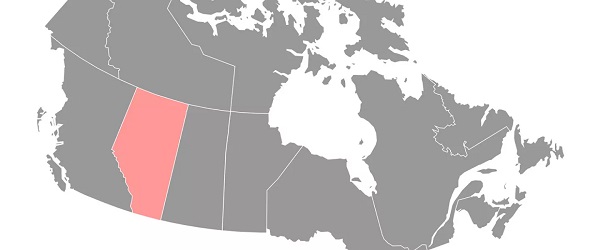
From the Fraser Institute
By Tegan Hill
With the tariff war continuing and the federal election underway, Canadians should understand what the last federal government seemingly did not—a strong Alberta makes for a stronger Canada.
And yet, current federal policies disproportionately and negatively impact the province. The list includes Bill C-69 (which imposes complex, uncertain and onerous review requirements on major energy projects), Bill C-48 (which bans large oil tankers off British Columbia’s northern coast and limits access to Asian markets), an arbitrary cap on oil and gas emissions, numerous other “net-zero” targets, and so on.
Meanwhile, Albertans contribute significantly more to federal revenues and national programs than they receive back in spending on transfers and programs including the Canada Pension Plan (CPP) because Alberta has relatively high rates of employment, higher average incomes and a younger population.
For instance, since 1976 Alberta’s employment rate (the number of employed people as a share of the population 15 years of age and over) has averaged 67.4 per cent compared to 59.7 per cent in the rest of Canada, and annual market income (including employment and investment income) has exceeded that in the other provinces by $10,918 (on average).
As a result, Alberta’s total net contribution to federal finances (total federal taxes and payments paid by Albertans minus federal money spent or transferred to Albertans) was $244.6 billion from 2007 to 2022—more than five times as much as the net contribution from British Columbians or Ontarians. That’s a massive outsized contribution given Alberta’s population, which is smaller than B.C. and much smaller than Ontario.
Albertans’ net contribution to the CPP is particularly significant. From 1981 to 2022, Alberta workers contributed 14.4 per cent (on average) of total CPP payments paid to retirees in Canada while retirees in the province received only 10.0 per cent of the payments. Albertans made a cumulative net contribution to the CPP (the difference between total CPP contributions made by Albertans and CPP benefits paid to retirees in Alberta) of $53.6 billion over the period—approximately six times greater than the net contribution of B.C., the only other net contributing province to the CPP. Indeed, only two of the nine provinces that participate in the CPP contribute more in payroll taxes to the program than their residents receive back in benefits.
So what would happen if Alberta withdrew from the CPP?
For starters, the basic CPP contribution rate of 9.9 per cent (typically deducted from our paycheques) for Canadians outside Alberta (excluding Quebec) would have to increase for the program to remain sustainable. For a new standalone plan in Alberta, the rate would likely be lower, with estimates ranging from 5.85 per cent to 8.2 per cent. In other words, based on these estimates, if Alberta withdrew from the CPP, Alberta workers could receive the same retirement benefits but at a lower cost (i.e. lower payroll tax) than other Canadians while the payroll tax would have to increase for the rest of the country while the benefits remained the same.
Finally, despite any claims to the contrary, according to Statistics Canada, Alberta’s demographic advantage, which fuels its outsized contribution to the CPP, will only widen in the years ahead. Alberta will likely maintain relatively high employment rates and continue to welcome workers from across Canada and around the world. And considering Alberta recorded the highest average inflation-adjusted economic growth in Canada since 1981, with Albertans’ inflation-adjusted market income exceeding the average of the other provinces every year since 1971, Albertans will likely continue to pay an outsized portion for the CPP. Of course, the idea for Alberta to withdraw from the CPP and create its own provincial plan isn’t new. In 2001, several notable public figures, including Stephen Harper, wrote the famous Alberta “firewall” letter suggesting the province should take control of its future after being marginalized by the federal government.
The next federal government—whoever that may be—should understand Alberta’s crucial role in the federation. For a stronger Canada, especially during uncertain times, Ottawa should support a strong Alberta including its energy industry.
-

 Business1 day ago
Business1 day agoDOGE discovered $330M in Small Business loans awarded to children under 11
-

 COVID-191 day ago
COVID-191 day ago17-year-old died after taking COVID shot, but Ontario judge denies his family’s liability claim
-

 2025 Federal Election1 day ago
2025 Federal Election1 day agoThe High Cost Of Continued Western Canadian Alienation
-
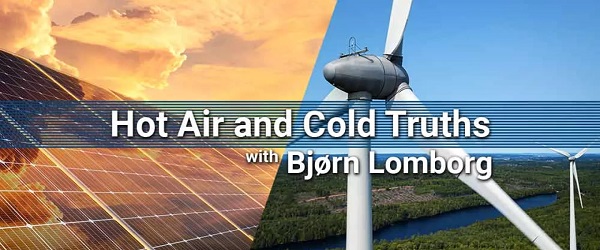
 Economy2 days ago
Economy2 days agoSolar and Wind Power Are Expensive
-
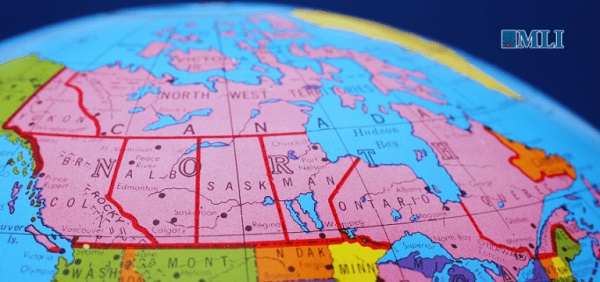
 Business2 days ago
Business2 days agoWhy a domestic economy upgrade trumps diversification
-
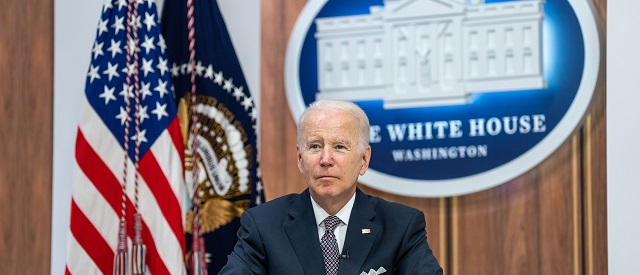
 Daily Caller1 day ago
Daily Caller1 day agoCover up of a Department of Energy Study Might Be The Biggest Stain On Biden Admin’s Legacy
-
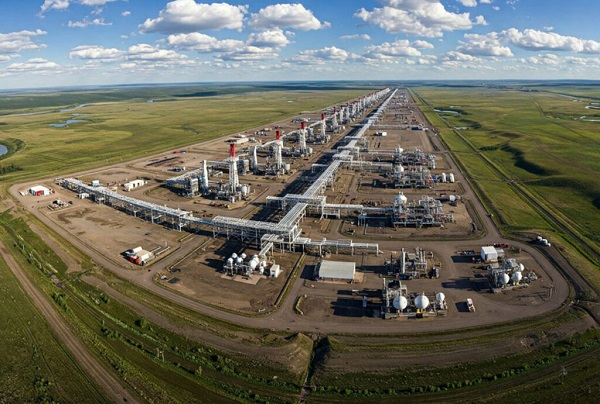
 Economy2 days ago
Economy2 days agoClearing the Path: Why Canada Needs Energy Corridors to Compete
-

 Business2 days ago
Business2 days agoTariff-driven increase of U.S. manufacturing investment would face dearth of workers


